Tapping the power of creativity in government
Unleashing innovative thinking for transformative change
By James Davies, Zach Meyer, Julián Hernández, J. Rae Cho and Nick Clelland
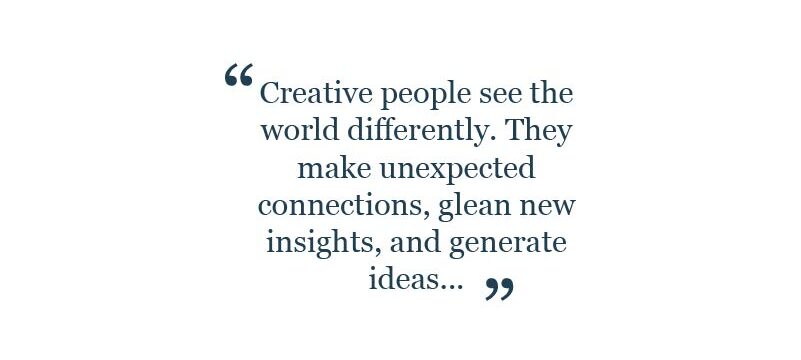
Making creative breakthroughs in government
Creative people see the world differently. They make unexpected connections, glean new insights and generate ideas – which drive transformative outcomes. Such impact is what good government aims for too. But “creativity” isn’t a word we often associate with the state. More often, it makes us think of scientific breakthroughs or artistic gestures that seize the imagination. And it’s true that the halls of power can be extremely resistant to new ways of thinking.
Yet creative thinking is a source of great strength, which can be put in service of government. Creativity can make the difference in a range of institutional areas, from strategy to policy to communications – true creative government involves the conjunction of all three. It can tackle entrenched problems that have proved resistant to conventional solutions, enable continuous, incremental improvement and help divert disaster. Further, innovative ideas often resonate with the public and can instigate lasting behaviour change.
As advisors to several governments, we’ve helped public-sector leaders find creative ways to drive progress on some of society’s most intractable problems. In 2018, for example, one of our author team had the opportunity to advise the City of Cape Town on crisis communications at a time when South Africa’s second city was facing severe water shortages. With a little lateral thinking, the worst-case “Day Zero” scenario was averted (see Case study 1). The proposed, untested strategy encountered some internal resistance. But with strong political leadership, civil servants were persuaded to take a novel approach – and were rewarded with success.

Case study 1: Day Zero averted – Cape Town’s water crisis
In 2018, three years into a drought of historic proportions, Cape Town averted disaster. By the end of January, dam levels had dropped to 25% capacity, and were predicted to fall to a frightening 13.5% by April. At that juncture, the municipal taps would be turned off completely, with water only delivered to hospitals and other essential services.[1]
It was feared that presenting this doomsday scenario to the public would be counterproductive, leading to water stockpiling and widespread panic. To stir a more positive response, an alternative strategy was worth a try. The team decided to appeal to people’s imagination with a less extreme but still sobering proposition. The city publicised the possibility that citizens would have to queue for water.[2] In this scenario, residents would receive a daily allotment of 25 litres per person at one of 200 collection stations.[3]
To make the prospect vivid in the minds of the electorate, the city set up a functional test site – complete with communal taps and people waiting in line. It was a daring strategy, one that required a lot of behind-the-scenes persuasion of administrators. But it worked. Capetonians responded by voluntarily cutting down on their water usage and Day Zero thankfully never came.[4]
In all, the city’s approach was successful in reducing water consumption by nearly 60%.[5] The strategy involved water-pressure throttling, imaginative omnichannel messaging about water conservation, a website where residents could track water usage, and high tariffs.[6] The Day Zero campaign has subsequently been studied as a happy example of how complex problems of governing can be addressed with clear, imaginative communication and sensitive handling of political dynamics.[7]

The creativity block
Still, such cases are the exception, not the rule. Too often, bold ideas get bogged down in bureaucracy – or just never arise. Government entities often default to cautious or familiar responses, resisting innovation. They may value creativity in the context of education or art, but typically fail to apply it to their own processes. And even where individual actors are willing to try new things, they find obstacles in their path.
It’s not that governments lack innovative ways to tackle societal challenges. Design thinking and behavioural “nudges”, for example, are techniques we know bring results. So why the disconnect? What is it about the workings of government that holds back the creative energies of its office holders?
Risk and reward
One major contributing factor is that governments tend to be deeply averse to risk. Creativity inherently requires a degree of risk taking – and government entities usually err on the side of caution. Of course, there are very good reasons for this: the risks involved are profound. Governments have weighty responsibilities to citizens and failures tend to result in public consequences:
- The eyes of the nation and the world are on elected officials, and in the cut and thrust of politics, partisan agendas come to the fore.
- On an individual level, there’s resistance to going against convention – one slip can mean the end of a career. Media scrutiny (including social media), opportunistic shaming and reputational damage control all play their part.
- Civil servants have their own risky paths to negotiate. They may be responsible for the management of significant budgets, or for services essential for people’s lives and wellbeing.
But there is a price to pay for caution, too: richly productive modes of thinking – lateral thinking, experimentation, trial and error – often lie beyond government’s grasp. How can the state foster an environment where creative thinking thrives and is protected?
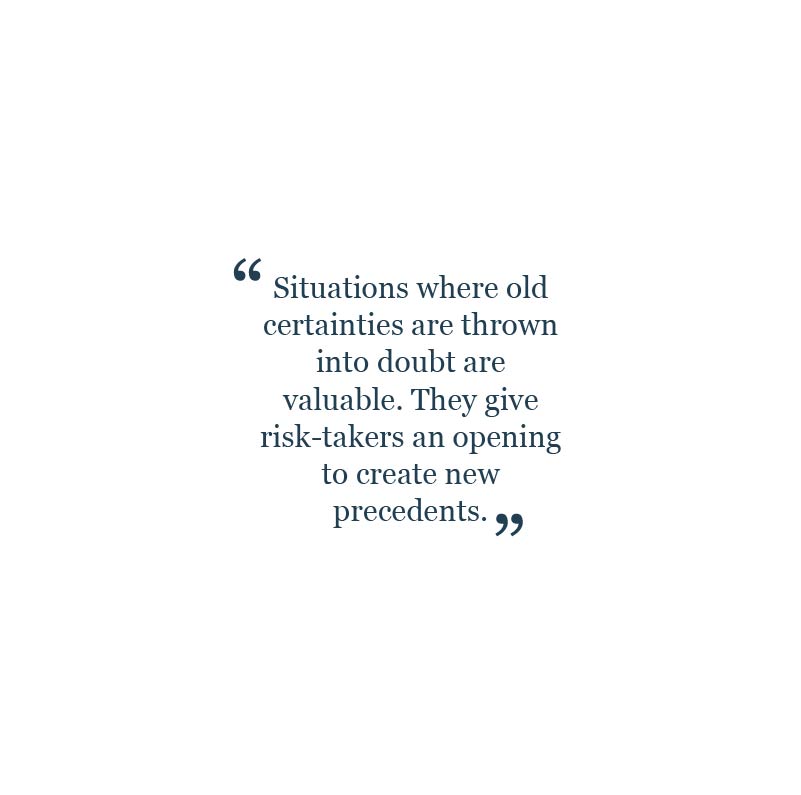
Four ways governments can work more creatively
From our experience of working with government leaders, we’ve extracted four strategies that can help.
1. Embrace risk – and manage it
In creative thinking, the inherent possibility of failure is a feature, not a bug. It’s all about balancing assessment of risk against assessment of gain. And there are steps you can take to build a safety net under your creative high-wire act:
Design a methodology for creativity
It’s important to adopt and communicate a clear process for creative projects, one that accommodates risk and goes beyond securing the usual stakeholder buy-ins. For example, the state government of North Rhine-Westphalia in Germany has created two decentralised co-working spaces for employees at pilot locations in Aachen and Duisburg. Here, people from various ministries and departments can meet and work side by side, deepening relationships and sparking cross-functional cooperation.[8]
Set up a creative-strategy office
This can be a seedbed for ideas – and insulate their originators to some degree from consequences if they fail (as they sometimes will). A “sandbox” environment lets individuals speak up and experiment in a pre-agreed, systematic way without being penalised. Strong communication lines with more traditional departments can enable regular mutual feedback.
See opportunity in crisis
Situations where old certainties are thrown into doubt are valuable. They give risk takers an opening to create new precedents. If no one else has a ready solution to a crisis, a high-stakes or unconventional proposal will be more tolerated; and if it’s a win, it may become a model for the future.
Push the limits – in small steps
Another way to both entertain and contain risk is to start small. A pilot project in a test market can probe the feasibility of a rule-breaking idea. If it works, scale it up; if it doesn’t, iterate and learn from the experience. In Malaysia, for example, one of our author team was involved in creating an unconventional project for prisons, which first demonstrated its effectiveness in a few trial locations (see Case study 2).

Case study 2: A strategy for prison reform in Malaysia
In 2010, the Malaysian government had a mounting problem: the county’s prisons were overcrowded, with few rehabilitation programmes and a shortage of prison space. The result was a volatile mix of low-risk and violent criminals confined in packed jails.
Conventional thinking would dictate simply building more prisons, a costly and inefficient solution. But the advisory team came up with a radically different idea: why not make use of underutilised secure facilities – ones that were already built and came with their own security? Military camps could be turned into rehabilitation centres for low-risk criminals, offering vocational training.
It was a new way to think about imprisonment in Malaysia: not focused on punishment, but rather on reintegration. Before launching the scheme, the strategy team undertook an extensive engagement process with relevant government and public entities. In particular, local human-rights groups were invited to review and endorse the project.[9] The resultant Community Rehabilitation Program (CRP) was launched as part of the National Blue Ocean Strategy, which sought to create high-impact, low-cost policy initiatives.[10]
The CRP’s key components were a risk-assessment tool used to determine which prisoners were eligible for release, a rehabilitation programme to provide them with skills training, education and counselling, and a post-release support programme to help them find jobs and housing. Prisoners’ families were also encouraged to visit the sites often and mingle freely with the prisoners.[11]
The CRP was strikingly successful, rehabilitating more than 8,000 prisoners in the first five years.[12] The positive impact on the recidivism rate was clear, with fewer than 1% of prisoners released under the programme reoffending; 85% became self-employed, using skills learned at the centre.[13]
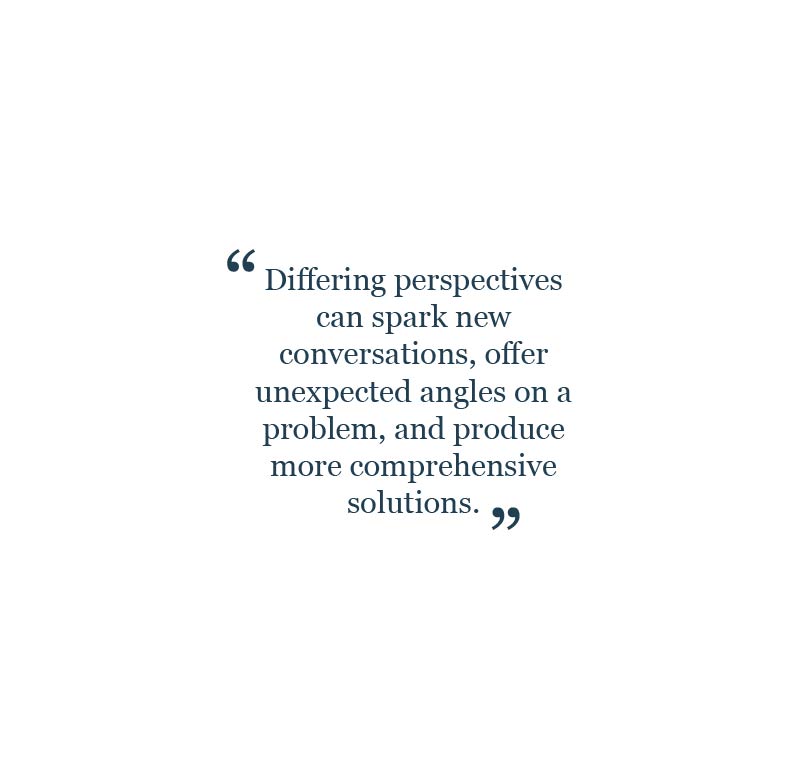
2. Engage diverse voices from government and beyond
People in government tend to be fairly homogeneous in their skills and approaches. Often, they share an analytical style of thinking, favouring logic and data. Of course, rational, structured thinking is essential for a functional government – but creativity draws on other sources of power. It often relies on intuition and may not thrive in a conformist or strictly rule-driven environment.
Many in the world of government have similar life perspectives and education, often sharing backgrounds in law or politics. Very few have trained or worked in traditionally creative industries such as the arts. There’s also a lack of demographic diversity, with women, working-class people and minority groups often underrepresented. This means that governments lose the benefit of a range of views and mindsets. Differing perspectives can spark new conversations, offer unexpected angles on a problem, and produce more comprehensive solutions. How to bring other voices into the mix?
Recruit and nurture diverse minds
This goes beyond demographics and extends to personalities. Shifts in thinking often emanate from a small group of unique people who are fonts of unusual ideas. They may be unorthodox and have ways of working that are unexpected in the government context, but it’s important for such talents to feel comfortable and enabled to express themselves.
Invite creative catalysts into the process
Various organisations and advisors outside government have experience in solving societal, behavioural and communication problems, and they’re not burdened with the institutional responsibilities of the state. These are creative people who understand how government works and can help to build a framework for innovation. Bringing them in is an effective way to diversify – and faster than changing hiring practices.

Design cross-functionality into your operations
A siloed approach can maximise efficiency, but creative ideas often cut across such divisions. Policy ideas are unlocked when problems are tackled in an integrated manner, perhaps with the creation of dedicated cross-functional teams. In the Malaysian example, it was a difficult task to convince the army to work with the prisons service, well outside their familiar protocols – but necessary for the success of the project.
Engage stakeholders early – don’t surprise them with outcomes
Community stakeholders can bring different ways of thinking and doing. In addition, a thorough stakeholder-engagement process offers support and protection to schemes that need public approval, especially in local government. By nature, creative ideas can be unorthodox, requiring more preparation than usual before implementation; that means an extra focus on stakeholder engagement, management and buy-in.
Use the authority of impartial commissions
Such external bodies bring special expertise to decisions and policies, bridging partisan and ideological divides. By lending their authority to bold and perhaps controversial plans, they grant governments the political freedom to move ahead – as well as some distance from potential negative outcomes.
Show the world first – and tell them later
Ordinarily, government entities are eager to announce their initiatives. But with sensitive ventures, a “show don’t tell” approach may be the better choice. Transparent communication does not always require the fanfare of a public announcement. A low-key pilot study can be a less pressured way to explore an idea, letting it run for a time before drawing attention to its success. This will preserve credibility for future projects.
Tap into inside knowledge, without outsider restrictions
Former officials possess a wealth of institutional knowledge, while enjoying greater latitude to act than current office holders. Such outside specialists are credible, neutral mediators. For example, one of our author team was closely involved in the US Department of Defense’s convening of “Track II” advisors to address regional conflict (see Case study 3).

Case study 3: A second track to diplomatic impact in South Asia
Track II diplomacy is the time-honoured practice of pursuing informal contacts between non-state actors (in contrast to official Track I or secret government diplomacy). Such high-level but informal discussions can have far-reaching impact in situations where officials are politically constrained from engaging directly.
A Track II strategy brings together influential and knowledgeable players (such as ex-officials) from both sides of a potential conflict, who consult and take their conclusions back to their respective leaders. Such discussions have averted numerous hostile incidents. These negotiations are traditionally managed by foreign ministries such as the State Department – despite the fact that defence ministries tend to have command of larger networks and far more capital. In the US, for example, the Defense Department historically has not involved itself in such efforts.
However, in recent decades, the Near East South Asia (NESA) Center for Strategic Studies has stepped into the breach.[14] Established in 2000, NESA is the preeminent US Department of Defense institution for promoting security cooperation in the region. It provides a collaborative space for policymakers, working with foreign-policy communities and select institutions. Boasting an alumni network of nearly 10,000 security professionals from over 120 countries, NESA is uniquely positioned to leverage US military knowledge, connections and funding for greater global stability.
The Center’s breakthrough realisation was that Track II principles could be transplanted from the world of foreign policy into the world of defence strategy. Backed with superior defence funding and deploying NESA’s alumni resources, Track II could be applied to formidable transnational military threats.
For example, in 2010 NESA funded the 7th Confidence and Cooperation in South Asian Waters Symposium in Bangkok.[15] Initiated by the Centre for Foreign Policy Studies at Dalhousie University and attended by former senior officers from the navies of India and Pakistan, the symposium focussed on maritime issues affecting these countries.[16] Discussions encompassed boundaries, emergency management, environmental protection, piracy and other sensitive matters. One of the gathering’s most significant tasks was establishing protocols to deal with incidents at sea – thus avoiding escalation of minor or accidental encounters between the warships of the two nuclear powers. In other NESA initiatives, Track II negotiations have been utilised to combat arms smuggling and the proliferation of weapons such as MANPADS (portable surface-to-air missiles) in North Africa.
NESA’s groundbreaking programme brought Track II diplomacy from the world of foreign policy into the world of defence. It’s an outstanding example of a small group of creative thinkers who were given latitude to innovate – ultimately advancing US national security. By employing unorthodox diplomatic pathways and engaging with partner organisations beyond the usual channels, NESA has tackled, and successfully impacted, some of the world’s toughest security challenges.
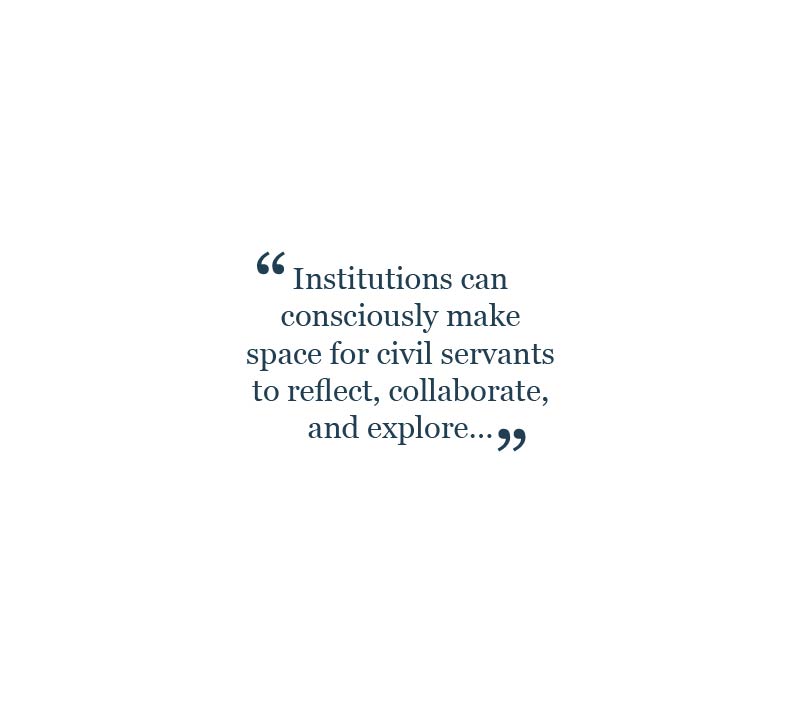
3. Build a culture of creativity and give it time to grow
In all these efforts, shifting the government ethos is key. Institutions can consciously make space for civil servants to reflect, collaborate, and explore outside their immediate job responsibilities and boundaries:
Bring everyone on board
While people from outside can be brought in to inject creativity, civil servants also need to understand the potential benefits (and risks) of taking a creative path. Commit training and resources, using external expertise where required, to make sure that everyone understands the strategy.
Create a framework to bolster confidence
Decision makers need reassurance that creative approaches are effective, and that success can be measured. For example, in the UK the Youth Justice Board, launched in 1998, brought together relevant local government agencies in teams and freed them to innovate in their efforts to reduce youth crime.[17] In parallel, a national framework provided oversight through monitoring and evaluation.
Stay agile to grasp opportunities
Being relevant at the right time and place requires speed in approvals and other processes. This means finding advisors who can seize the moment and execute rapidly for maximum impact.
Make time for thoughtful engagement
When one of our author team was involved in strategy development for the UK government, time for imaginative speculation was built into the schedule. This space allowed civil servants to develop a tradition-disrupting idea about the allocation of government property (see Case study 4).

Case study 4: The UK Treasury provides time for thought and innovation
Innovation can come from within state structures if creative elements can be freed to experiment. Some years ago, the UK Treasury strategy team allowed for breathing space between high-pressure fiscal events such as budget announcements. This gave time for an unconventional idea to germinate and safe space for it to grow – crucial, given the time-consuming, delicate negotiations that were also required to bring all ministries on board with a novel plan to free up revenue.
In 2014, with significant pressure on national finances, a question was posed by the Treasury’s strategy team: how can we influence departments to take more economic responsibility for the space they use? Given the value of UK government real estate – then over £150 billion, with an annual maintenance bill of over £22 billion – this was a crucial question.
In the Treasury’s analysis, there was little incentive for departments to use their real estate efficiently or to generate extra revenue. They owned the properties, which did not impact annual spending allocations. Why would the Department of Health, for example, focus on a broader economic-value issue not relevant to its mandate?
The challenge, then, was developing an actionable, cost- and resource-efficient plan to ensure that departments participated in value-creating schemes. A radical solution was formulated: ownership of the properties would fall under Treasury, and government departments would be encouraged to lease back space at market prices, if desired. If not, the space could be made available to the private sector. This approach would incentivise departments to make cost-efficient decisions regarding location and space utilisation. Additionally, it would free up unused space for higher-value private-sector activities.
This was a simple, creative solution that fundamentally shifted long-standing ways of doing things in one deep-rooted aspect of government, with the possibility of large gains. And it came about because a portion of the Treasury’s strategy team was given the mental space to focus on, and innovate around, a frequently overlooked issue.
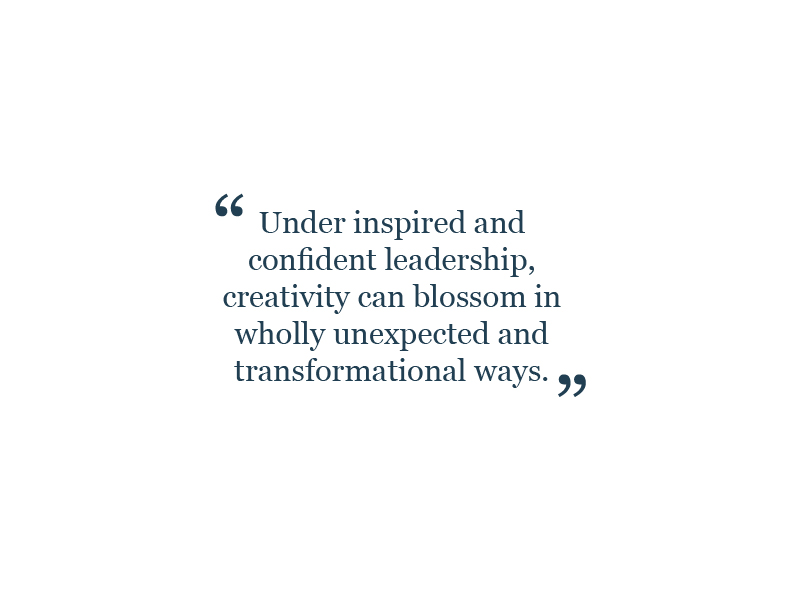
4. Be a leader of creativity
None of these steps are possible without decisive leadership. Considerable cultural shifts may be involved – and that calls for farsighted leaders who have both the authority and the vision to cultivate creativity, with all its dangers and possibilities. What does it take to fill this role? Leaders can ask themselves three key questions:
- Does your position give you authority to act, evaluate and implement precedent-setting programmes, even when the risk is high?
- Can you draw out the creativity in others? Perhaps you don’t see yourself as a “creative” in your working life. But effective leaders have the capacity to appreciate and enable this quality in the people around them. Recognising and mobilising talent is a kind of creativity in itself.
- Can you offer protection to creative civil servants who might be taking big risks, shielding them from career-limiting consequences when experiments fail or ideas break standard public-sector rules – and so lessen fear-driven inaction?
Under inspired and confident leadership, creativity can blossom in wholly unexpected and transformational ways – for example, a government report that is also a crossover fashion event (see Case study 5).

Case study 5: A Saudi report takes to the Paris runway
In 2023, Consulum was approached to research, create and disseminate a significant report for the Saudi Fashion Commission.[18] ‘The State of Fashion in the Kingdom of Saudi Arabia’ documents the local ecosystem, marrying rigorous quantitative data with qualitative insights from interviews with industry leaders.[19] The first report of its kind in the country, this data-driven tool is targeted at local and international investors, retailers, manufacturers and other stakeholders seeking to understand the sector’s evolution and landscape of opportunity.
Our team was challenged to integrate an intensely creative field – fashion – with the somewhat more staid report format. It didn’t feel right for this process to culminate in a conventional keynote presentation. We know that in today’s media world, omnichannel communication is key: new, eclectic forms reverberate with audiences in ways that traditional marketing executions can’t. And so we decided to handle the small but impactful public-communications element of the project in an unorthodox way, producing a multiformat spectacle to shift perceptions of Saudi fashion.
We marshalled our experience in the worlds of art, fashion and advertising to create a unique solution. For Paris Fashion Week, the report would quite literally be translated into the language of fashion – unveiled in the form of a limited-edition book, which could also be woven into a spectacular dress. The hand-crafted volume was stitched by master bookmakers using traditional craft techniques, with all the quality and attention to detail associated with haute couture. Within its pages, the report offers data, but also a sewing pattern and enough fabric to construct a dress conceived by renowned Saudi label Atelier Hekayat.[20]

The launch in Paris, the fashion capital of the world, coincided with the announcement of the debut Riyadh Fashion Week. The dramatic runway presentation was a testament to the growth of the Saudi fashion sector, its scale of opportunity, and its potential to unlock economic opportunities. The showstopper dress started conversations, generated global interest, and emphasised the government’s commitment to the industry.
The project as a whole effectively integrated strategy, policy and communications to deliver the Commission’s vision. The book, with the dress unfolding from its pages, has played an ambassadorial role, boosting the Commission’s profile and credibility. It effectively delivered the report’s larger message, cutting through to audiences that might not have been receptive before – engaging Saudis with brands that represent their identity, while giving international consumers a glimpse of a whole new world of style. Not least, it grasped the attention of industry stakeholders, as well as media and sustainability organisations. No conventional press release or PDF could have achieved this level of impact.
Under the leadership of CEO Burak Çakmak, the Saudi Fashion Commission has embraced this bold approach. The Commission now plans to release regular editions of the report and has developed a Fashion Insights web platform to further spread its influence.[21]
Discover the creative process behind the Fashion Commission Wearable Report in this video from Consulum’s creative team
An opportunity for historic transformation
Governments around the world are facing unprecedented challenges and transitions – climate change, stubborn inflation and the rise of AI, to name a few. These demand extraordinary, collaborative, innovative solutions.
At the same time, we have more tools for creativity at our disposal than at any other time in history. We’re more connected and socially mobile, and have access to sophisticated data and hugely powerful technologies. Together, these conditions create an opportunity to change the way we govern in fundamental ways. It’s possible to involve creativity end to end in all functions – from the most apparently mundane, such as property allocation, to the most vibrant communication campaign.
The lessons for governments wanting to push their creative boundaries are clear. Remember that risk brings reward; invite alternative voices; use your leadership to build and guard the space for imaginative play. And know that sometimes you have to fail a little to succeed in transformative ways.
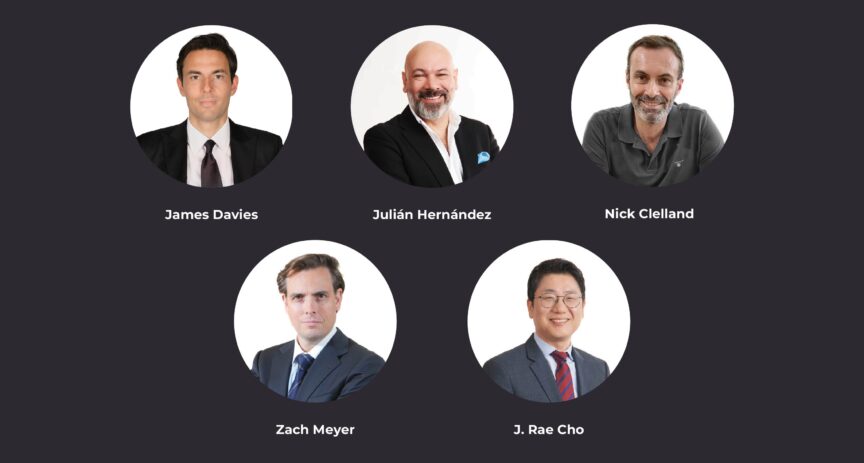
About the authors
James Davies
James is Managing Partner at Consulum. An integrated government expert, he specialises in government strategy and public-policy formulation. Previously, James worked in 10 Downing Street under UK Prime Ministers Gordon Brown and David Cameron, and at HM Treasury, where he was Head of Budget Policy leading teams to deliver creative solutions to complex and politically sensitive tax and fiscal-policy challenges.
Zach Meyer
Zach is Consulum’s Head of Global Business Development. He is a senior international affairs and policy specialist, bringing nearly two decades of experience in helping leaders in the Middle East, North Africa and South Asia (MENASA) develop and implement multilateral engagement strategies. In his previous role with the US Government, he led special cross-disciplinary teams to propose new initiatives and facilitate dialogues on critical national-security issues with officials across the MENASA region, building trust with partners and improving security cooperation.
Julián Hernández
Julián is Consulum’s Executive Creative Director. He delivers innovative communications, strategy consulting and digital branding for governments and corporations worldwide. Julián brings policy to life through accessible, compelling design and branding campaigns. He has received numerous awards for his work in South America, the Middle and Far East in sectors including tourism, culture, digitisation, aviation and investment.
J. Rae Cho
Rae is a Senior Director and Head of Policy at Consulum. As policy advisor to the Prime Minister’s Office of Malaysia, he worked at the highest levels of government and was a founding member of the National Blue Ocean Strategy team, tasked with developing innovative and creative policy approaches. He has developed numerous strategic plans and policy recommendations for national innovation, entrepreneurship, public-service delivery, rural development, youth employment and women’s empowerment.
Nick Clelland
Nick runs Government Guild, a consultancy that develops high-performance government teams and coaches government leaders. A former South African Member of Parliament, Nick has worked around the world as a political strategist and senior government advisor, including as Chief of Staff to the Mayor of Auckland and Special Advisor to the Premier of the Western Cape in South Africa. He has been on the teaching staff at the International Academy for Leadership in Germany for more than 20 years.
References
[1] Cassim, Z., “Cape Town could be the first major city in the world to run out of water”, USA Today, January 19, 2018.
[2] De Lille, P., “Day Zero: when is it, what is it, and how can we avoid it?”, Politcsweb, 16 November 2017.
[3] “Cape Town could be the first major city in the world to run out of water”, 2018.
[4] Martinus, A. & Naru, F., “How Cape Town Used Behavioral Science to Beat Its Water Crisis”, Behavioral Scientist, October 19, 2020.
[5] De Villiers, J., “How Cape Town avoided Day Zero and cut its water usage by 50% in 3 years – it took Melbourne 12 years to do the same”, News24, March 07, 2018.
[6] “The Album That Got People Singing to Save a City: 2-minute shower songs”, Sanlam.co.za.
[7] Booysen, M. J., Visser, M., & Burger, R., “Temporal case study of household behavioural response to Cape Town’s Day Zero using smart meter data”, Water Research, 149, 414-420, 2019.
[8] “Co-Working-Spaces für die Landesverwaltung: Minister Pinkwart und Minister Lienenkämper besuchen Pilotstandort in Aachen”, Finanzverwaltung des Landes Nordrhein-Westfalen, May 9, 2022.
[9] “Breaking Down Silos: Malaysia’s Experience in Strengthening Inter-Agency Cooperation”, World Bank Group, 2020.[10] Kim, W.C. & Mauborgne, R., Blue Ocean Shift, Macmillan, 2017.
[11] Othman, A.F., “CRP under National Blue Ocean Strategy a success, with prisoner recidivism rate of just 0.5 per cent”, New Straits Times, December 18, 2016.
[12] “40091 convicts under community-based programs released on parole”, The Sun Daily, November 1, 2021.
[13] Shahar, F.M., & Kannan, H.K., “More than RM1.3 billion saved via Community Rehabilitation Programme.” New Straits Times, August 16, 2016; “CRP under National Blue Ocean Strategy a success”, 2016.
[14] Near East South Asia Center (nesa-center.org).
[15] “Confidence and Cooperation in South Asian Waters”, 7th Symposium, Bangkok, Thailand, April 2010.
[16] “Past Project: Confidence & Cooperation in South Asian Waters”, Ottawa Dialogue, April 20, 2020.
[17] Youth Justice Board, gov.uk; Boucher, S and Oates, J, “Challenging Received Wisdom and Spreading Innovation: Lessons from the Youth Justice Board”, in The Routledge Handbook of Collective Intelligence for Democracy and Governance, pp.289-295, 2023.
[18] Portee, A., “Why you should be paying attention to fashion from Saudi Arabia”, Forbes, June 13, 2023.
[19] State of Fashion in the Kingdom of Saudi Arabia, Saudi Fashion Commission, 2023.
[20] Ilcinas, A., “Saudi Fashion Week announced as Fashion Commission unveils new report on fashion sector opportunities”, Arab News, June 26, 2023.
[21] “Saudi Fashion Insights”, Fashionfutures.com, 2023.
